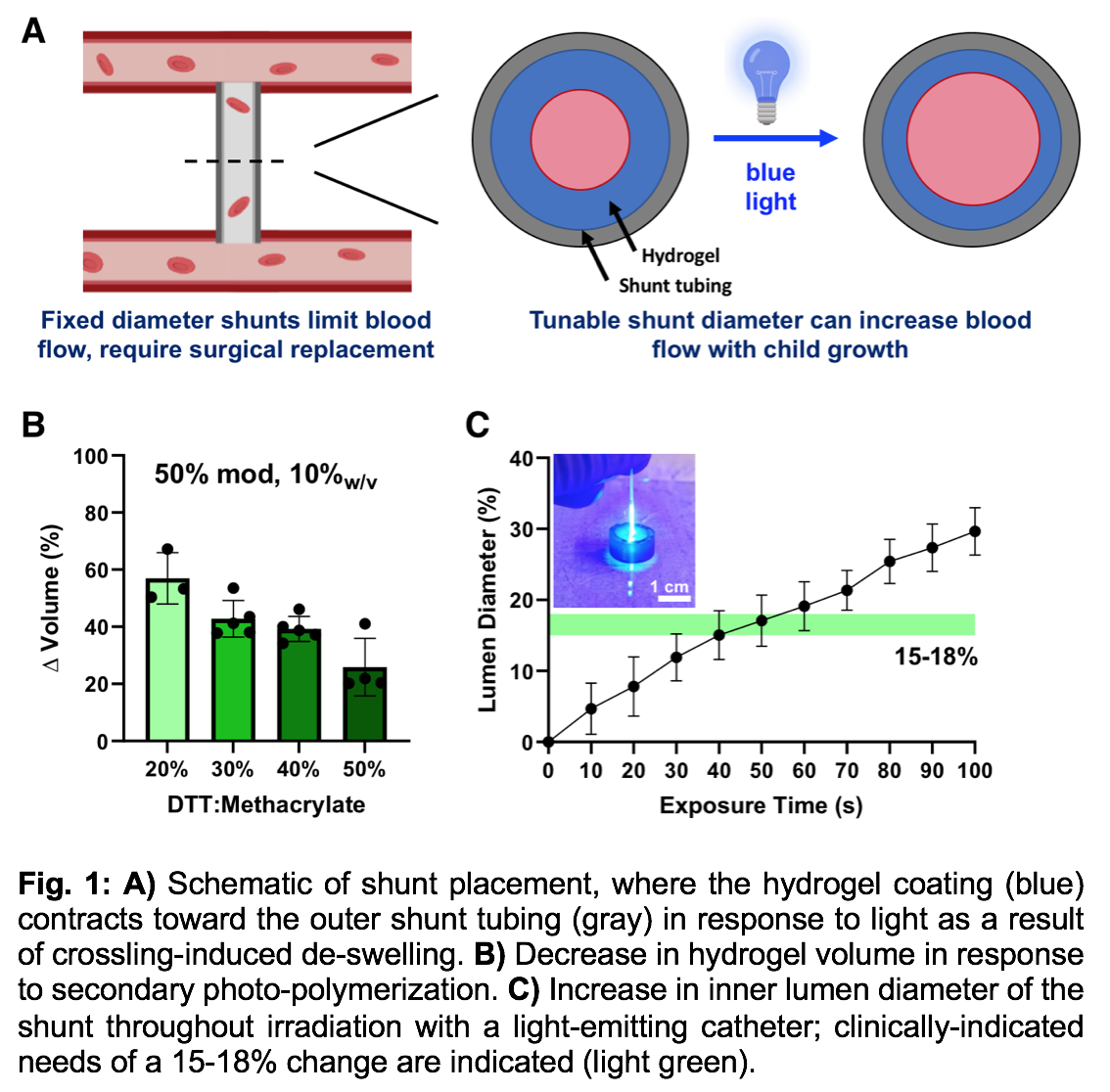4108580
Development of a geometrically-tunable blood shunt for pediatric heart reconstruction surgery
Date
August 19, 2024
Related Products
Dual-stage addition and photo-crosslinked hydrogels for use in geometrically tunable blood shunts
In the most severe congenital heart defects, infants are born with only half their heart fully developed and undergo life-saving heart reconstruction surgery involving the implantation of a fixed diameter blood shunt…
Shear-thinning injectable hydrogels for local cell therapy
Cell therapies are a rapidly advancing field with the potential to transform personalized medicine and to address underlying biological dysfunctions rather than just managing symptoms. While effective in diffuse treatments (e.g., blood cancers), applications in solid tissue diseases (e.g…
Development of avidity-controlled biotherapeutic delivery systems for the treatment of acute kidney injury
Acute kidney injury (AKI) occurs in over 50% of critically ill patients. The poor recruitment and differentiation of regulatory T cells (Tregs) is associated with chronic kidney disease (CKD) development…
Injectable granular hydrogels enable avidity-controlled cytokine delivery
Biotherapeutics exhibit excellent target specificity and are used to treat a range of diseases from cancer to autoimmune dysfunction. Their use benefits from sustained local delivery to concentrate drugs at the site of action and prolong therapeutic effects…



